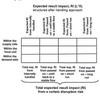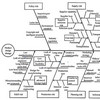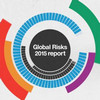 Following up yesterday’s post on why one of the world’s richest countries has one of the world’s worst road networks, today’s newspapers offer an interesting perspective: According to numbers prepared by Norway Statistics, Norway spent less money on road investments in 2007 than in 1995, that is, if you count in % of GDP. Is that a correct way of looking at it?
Following up yesterday’s post on why one of the world’s richest countries has one of the world’s worst road networks, today’s newspapers offer an interesting perspective: According to numbers prepared by Norway Statistics, Norway spent less money on road investments in 2007 than in 1995, that is, if you count in % of GDP. Is that a correct way of looking at it?
Money is money is money, no matter what?
The government does not subscribe to that view of course, stating that never has more money been spent on road investments than this year (remember, there are elections this year)…if you count the coins. Measured in GDP, however, Norway spent 23% less in 2007 than in 1995. So, which is correct?
GDP?
I’m not sure GDP is the answer. After all, Norway’s GDP depends largely on oil and gas exports, so when the oil price goes up, so does GDP. However, in this case, oil- and gas-related parts of GDP were excluded, so I find the use of GDP is in order. And? Judging by the numbers I could dig up, Norway’s economy is definitely better in 2007 than it was in 1995. GDP has roughly doubled. And road investments have gone down by 23%.
Related
- tu.no: Bruker mindre på vei
- aftenposten.no: Kraftige kutt i veibevilgninger
- tv2.no Veibygging blir nedprioritert












